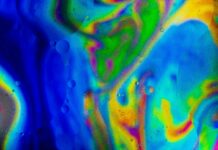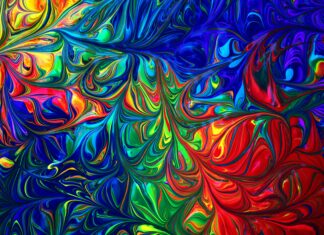Gigapixel AI, a groundbreaking innovation in the field of artificial intelligence and image processing, has revolutionized the way we perceive and manipulate high-resolution images. Gigapixel AI stands at the forefront of a technological leap that addresses the challenges posed by ever-increasing image sizes and the quest for sharper, more detailed visuals. Through its advanced algorithms and neural network architectures, Gigapixel AI has unlocked new dimensions in image upscaling, enabling the enhancement of low-resolution images to an unprecedented level of detail and clarity. This transformative technology, which has gained widespread recognition across various industries, holds the potential to reshape how we approach photography, digital art, medical imaging, and more.
Gigapixel AI is built upon the foundation of deep learning, a subset of artificial intelligence that emulates the neural networks of the human brain to process and understand complex data patterns. Specifically designed convolutional neural networks (CNNs) serve as the backbone of Gigapixel AI’s image enhancement capabilities. These neural networks are trained on vast datasets of high-resolution images to learn the intricate features and patterns that contribute to image sharpness and detail. With this knowledge, Gigapixel AI can intelligently interpolate and reconstruct missing information in low-resolution images, effectively “imagining” the additional pixels that would exist in a higher-resolution version of the same image.
The technology’s name itself, “Gigapixel AI,” encapsulates its core function and capacity. A gigapixel refers to an image containing at least one billion pixels, a resolution that transcends the capabilities of most conventional cameras and displays. Gigapixel AI harnesses the power of deep learning to scale images, not just by doubling dimensions, but by expanding them multiple times over, while maintaining or even enhancing visual quality. This ability to transform low-resolution images into gigapixel-quality visuals has broad implications across various domains, ranging from digital art restoration and cultural heritage preservation to medical diagnostics and surveillance applications.
The process by which Gigapixel AI enhances images is a testament to the sophistication of modern machine learning techniques. When a low-resolution image is input into the Gigapixel AI software, the neural network analyzes the image’s features and intelligently infers how they would appear at higher resolutions. By leveraging its vast training data, the neural network makes educated predictions about textures, shapes, and details that may not be immediately discernible in the original image. Through a series of intricate calculations, the neural network generates additional pixels that complement the existing ones, ultimately reconstructing the image at a higher resolution while preserving its fidelity and authenticity.
The applications of Gigapixel AI are far-reaching and span across diverse sectors. In the realm of photography and digital art, Gigapixel AI offers photographers and artists a tool to breathe new life into their works. Images that were captured with lower-resolution cameras or that have deteriorated over time can be upscaled to larger sizes without sacrificing quality. Fine details in historical photos or artwork can be revealed with astounding clarity, allowing for deeper appreciation and analysis. Museums, galleries, and cultural institutions are utilizing Gigapixel AI to digitally preserve and showcase their collections, ensuring that the nuances of artistic expression are not lost to time.
Gigapixel AI has also found its place in medical imaging, a domain where visual accuracy and precision are paramount. In fields like radiology, where medical diagnoses are heavily reliant on the clarity of images, Gigapixel AI aids in improving the resolution of scans and enhancing the visibility of minute anatomical structures. This has significant implications for accurate diagnosis and treatment planning. Moreover, the technology’s ability to enhance surveillance footage and satellite imagery has implications for security and geospatial analysis. License plate recognition, facial identification, and remote sensing benefit from the increased image resolution that Gigapixel AI provides.
Despite its transformative potential, Gigapixel AI is not without its challenges and limitations. While the technology excels in upscaling images and enhancing fine details, it is important to acknowledge that it operates based on predictions derived from existing data. In cases where an image’s content deviates significantly from the neural network’s training data, the results may not always be accurate or satisfying. Additionally, Gigapixel AI may encounter difficulties when attempting to recreate certain complex textures or patterns that are unique to specific images. This is a reminder that while artificial intelligence can perform remarkable feats, it is ultimately a tool that operates within the constraints of its training data and algorithms.
Gigapixel AI stands as a testament to the remarkable strides that artificial intelligence has made in the realm of image processing. Its ability to enhance image resolution while preserving detail and authenticity holds immense potential for diverse industries, from photography and art restoration to medicine and surveillance. The deep learning algorithms that underpin Gigapixel AI showcase the synergy between computational power and human ingenuity, resulting in a tool that can transform how we perceive and interact with visual data. While the technology is not without its challenges and limitations, its transformative impact on image enhancement is undeniable. As Gigapixel AI continues to evolve, it has the potential to reshape visual communication, enrich our understanding of the world around us, and redefine the boundaries of what is possible in the realm of image processing and artificial intelligence.
Gigapixel AI’s impact on the field of digital art and photography is particularly noteworthy. The technology enables photographers and artists to upscale their creations without compromising quality, opening up new avenues for creative expression and storytelling. In a world where images are often shared and consumed across various digital platforms, Gigapixel AI empowers content creators to present their work in larger formats without sacrificing the intricate details that define their artistic vision. This not only enhances the visual experience for viewers but also allows artists to delve deeper into their craft, focusing on finer nuances that might have been overlooked in lower-resolution versions.
The applications of Gigapixel AI extend beyond artistic endeavors and enter the realm of science and research. In fields such as astronomy and microscopy, where capturing high-resolution images of distant galaxies or minuscule cellular structures is crucial, Gigapixel AI contributes to clearer and more accurate visualizations. Researchers can now explore the universe’s mysteries at a level of detail that was previously unattainable, while scientists in biology and medicine can unravel the intricacies of cellular processes with unprecedented clarity. This intersection of technology and scientific inquiry paves the way for new discoveries and breakthroughs that have the potential to transform our understanding of the natural world.
Moreover, the impact of Gigapixel AI on cultural heritage preservation cannot be overstated. Ancient manuscripts, historical artifacts, and delicate artworks that have deteriorated over time can be digitally restored to their former glory using this technology. By upscaling and enhancing the resolution of these cultural treasures, Gigapixel AI ensures that future generations can experience and study them in their full splendor. This has profound implications for the conservation of human history and heritage, bridging the gap between the past and the present in a way that traditional restoration methods often cannot achieve.
While Gigapixel AI has garnered widespread acclaim, it’s important to consider the ethical implications and potential pitfalls associated with its use. As the technology is employed in various applications, questions arise about the authenticity of enhanced images and the potential for manipulation. In fields like forensics and journalism, where image integrity is crucial, the use of Gigapixel AI must be transparent and ethical, ensuring that the enhanced images accurately reflect reality rather than distorting it. Striking a balance between creative enhancement and responsible use is a challenge that requires careful consideration and ethical guidelines.
In terms of the broader societal impact, the accessibility and democratization of Gigapixel AI could potentially lead to an increased reliance on technology for visual representation. While the technology empowers individuals to enhance their images, it’s important to remember that the creative process and human touch remain integral to artistic expression. As we navigate this technological landscape, preserving the authenticity of art and recognizing the value of human ingenuity will be essential to ensuring that technology enriches rather than replaces the creative spirit.
In conclusion, Gigapixel AI represents a significant leap forward in the realm of artificial intelligence-driven image processing. Its ability to enhance image resolution and detail while preserving authenticity has transformative implications across various industries, from art and photography to science and research. As the technology continues to evolve, it is imperative to consider the ethical, creative, and societal dimensions of its use. By harnessing the power of Gigapixel AI responsibly and thoughtfully, we can unlock new realms of visual expression, exploration, and understanding. This technology stands as a testament to the remarkable synergy between human creativity and computational prowess, shaping the future of how we perceive and interact with the visual world.


















